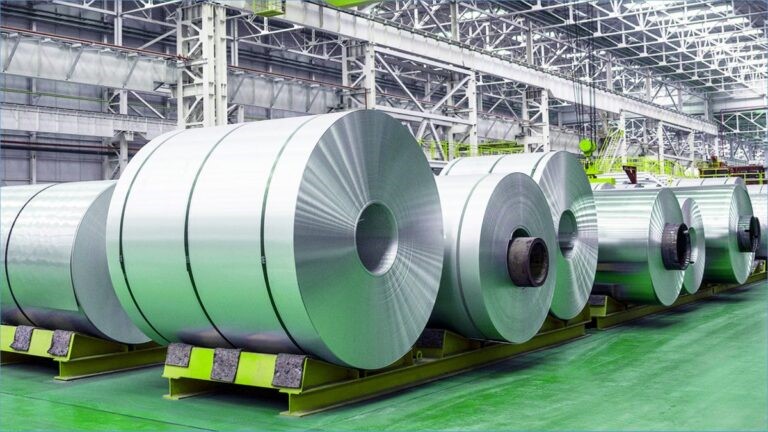Like many industrie the future of metals & steel manufacturing is under pressure to improve sustainability and reduce environmental impact. And for good reason. Steel production alone accounts for up to 11% of global CO2 emissions, and pollutants from the manufacturing process also cause issues for land and water health.
Luckily, there are clear and proven gains to be had from improving sustainability in metals manufacturing, and not just for the environment. While investment is required to switch to greener practices, the good news is that once established, more environmentally solid methods can be more cost effective, meaning that they will drive positive revenue outcomes as well as being better for the planet.
Why Going Green Matters
Impact on the Planet
Metals production is carbon intensive, as mentioned. The reliance on coal in the case of steel and on electricity for aluminium means that emissions are a significant problem. Beyond this, mining can cause environmental damage to local areas, and issues of water contamination from both mining and production processes cause further harm to the environment and people depending on it. Without careful management, the metal industry can do significant damage to local areas, as well as contribute to the damage of global climate change through high carbon emissions.
Changes in Regulation
With governments and regulatory bodies around the world increasing the focus on carbon reduction, the metals industry needs to be prepared to reduce its environmental impact. For example, the European Union is introducing the Carbon Border Adjustment Mechanism (CBAM) in 2026/27, which is a tariff on steel imported into the EU based on carbon emissions, making carbon-intensive production more costly.
Consumer Demand
The awareness of environmental impact has grown significantly in recent years, and there is demand across all industries for environmentally friendly production. This means that going green can be a competitive advantage, and can be the deciding factor in purchasing decisions on both small purchases and large-scale procurement.

Sustainable Practices in the Metals Industry
There are a range of ways to improve sustainability in metal production, and companies that are investing in them now will be able to navigate the regulatory and consumer pressures that are likely to continue in the decades ahead.
Energy Efficiency & Optimization
One of the most widely applicable practices to improve sustainability, is improving energy efficiency to reduce emissions. Helpfully, improving energy efficiency also reduces costs, so there can be clear financial benefits from investing in energy optimisation, alongside the environmental gains.
Renewable Energy
The source of energy used in metals production can be addressed, to reduce carbon emissions. Energy from solar, wind and hydropower can replace carbon-heavy sources and over-reliance on fossil fuels.
Recycling
Recycling and use of scrap metals has of course been a vital practice in improving sustainability for a long time. According to carbon accounting platform, Arbor, recycled steel is 75% cleaner than producing of virgin steel, and for aluminium and copper recycling cuts up to 95% of the energy demand compared to primary production. However, the global demand for scrap metals outstrips the supply.
Circular Economy Initiatives
A ‘circular economy’ approach goes a step beyond recycling, to encompass material efficiency strategies, relating to the durability of items, capacity for repair and the incentive to recycle as part of the product’s life cycle. It also involves the re-use of byproducts to reduce waste.
Carbon Capture
As carbon capture technologies improve, the metals industry is the perfect candidate for this approach of removing harmful carbon from flue gases. Instead of being released into the atmosphere, carbon can then either be stored, or utilised in other construction materials.
Transition to Cleaner Technologies
Significant investment has been made in developing new technologies, the most pertinent to greening the metals industry being green hydrogen for steel production, and Inert Anodes for aluminium. These technologies could transform the sector, and pave an exciting path to a low-carbon future, by replacing the need for carbon-heavy processes. That said, for them to become widespread enough to meet global demand, significant investment will be required by both the public and private sectors.
Leveraging Technology
Digital tools, automation and AI driven solutions can support the transition to a greener, more sustainable metals industry.
Data is power when it comes to so many of the practices mentioned above. Technology helps us to assess energy usage and emissions, identify potential efficiencies, optimize processes, and identify the areas in which changes will be both cost-effective and improve sustainability.
Digital twins in green steel production create a virtual replica of the entire steelmaking process—from raw material input to emission capture—allowing real-time monitoring, optimization, and predictive control. By simulating process variables like temperature, energy flow, and carbon intensity, they help reduce waste, improve furnace efficiency, and validate hydrogen or electric arc transitions before implementation, accelerating the path toward low-carbon, sustainable steelmaking.
Automation solutions are ideal for reducing waste and improving processes. Meanwhile, energy optimization is made simpler with AI tools to analyze real-time data alongside historical trends. AI in the metals industry can also help to model out the impact of investment in sustainable alternatives, helping to make the business case for today’s investment for a greener, and more sustainably profitable, future.
As regulations change, AI tools can play a key role in supporting the innovation that will be required for the metals industry to transition to sustainable practices. The businesses that engage proactively with these changes will be able to gain a competitive advantage, both in avoiding potentially punitive tariffs and ensuring they meet consumer expectations for environmentally sound production.
Overcoming the Barriers
Of course, change is challenging in any industry. But with the impending changes to policy, complacency is not an option when it comes to improving sustainability in metal production.
The primary barrier to change is going to be cost. Every single of the practices mentioned above require investment, and while some deliver financial returns alongside environmental benefits, those returns may not materialise for years, or even decades, as transitions take place. Balancing operational costs and the risks involved in large-scale changes, with the need for long term greener practices and sustainability will be an ongoing challenge for many industries, not least for metals production.
Luckily, there is investment on the horizon from governmental sources, as well as private businesses. Innovation in these areas is moving at a remarkable pace, and as technology supports breakthroughs to cleaner production methods, there is significant appetite to scale solutions up to transform the industry.
Businesses can make the most of AI and technology solutions, including the virtual twin, to both improve their immediate climate impact through efficiencies and waste reduction, and also plan for future investment in greener practices.

